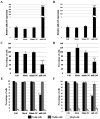Diagnostic and prognostic value of serum miR-145 and vascular endothelial growth factor in non-small cell lung cancer
- PMID: 34820011
- PMCID: PMC8607352
- DOI: 10.3892/ol.2021.13130
Diagnostic and prognostic value of serum miR-145 and vascular endothelial growth factor in non-small cell lung cancer
Abstract
Previous studies have reported the diagnostic and prognostic value of serum microRNA (miR)-145 and vascular endothelial growth factor (VEGF) levels in various types of cancer; however, their clinical use in non-small cell lung cancer (NSCLC) remains unclear. The present study included 215 patients, 106 with NSCLC and 109 with other lung diseases (OLDs). miR-145 expression levels were determined using reverse transcription-quantitative PCR (RT-qPCR) and VEGF levels were measured using an ELISA. The diagnostic performance was assessed using a receiver operating characteristic curve and area under the curve (AUC) analysis. A Kaplan-Meier survival curve and Cox regression analysis were employed to evaluate the prognostic significance of the markers. The biological function of miR-145 was examined in A549 and H1792 cell lines. The effects of miR-145 on cell proliferation of NSCLC cells were evaluated by flow cytometry, and the expression levels of miR-145 and cell cycle-related genes were determined by RT-qPCR. The results revealed that miR-145 and VEGF exhibited fair diagnostic performance [AUC, 0.61 (95% CI, 0.55-0.68) and AUC, 0.64 (95% CI, 0.57-0.71), respectively]. Combining age and smoking status with miR-145 and VEGF provided the best model for differentiating patients with NSCLC from those with OLDs (AUC, 0.76; 95% CI, 0.69-0.83). Furthermore, low serum miR-145 levels were associated with poor overall survival [hazard ratio (HR), 0.48; 95% CI, 0.27-0.85], whereas high VEGF levels were not associated with poor overall survival (HR, 1.47; 95% CI, 0.81-2.68). In addition, the results of the in vitro experiments indicated that miR-145 decreased cell proliferation via the induction of cell cycle arrest. In conclusion, the findings of the present study suggested that combining miR-145 and VEGF levels with clinical risk factors may be a potential diagnostic scheme for NSCLC. In addition, serum miR-145 may be used as a prognostic marker. These results indicated that miR-145 may function as a tumor suppressor in NSCLC.
Keywords: NSCLC; VEGF; diagnostic; miR-145; prognostic; serum.
Copyright: © Geater et al.
Conflict of interest statement
The authors declare that they have no competing interests.
Figures




Similar articles
-
Evaluating the diagnostic and prognostic value of serum miR-770 in non-small cell lung cancer.Eur Rev Med Pharmacol Sci. 2018 May;22(10):3061-3066. doi: 10.26355/eurrev_201805_15064. Eur Rev Med Pharmacol Sci. 2018. PMID: 29863251
-
Investigation of serum miR-411 as a diagnosis and prognosis biomarker for non-small cell lung cancer.Eur Rev Med Pharmacol Sci. 2017 Sep;21(18):4092-4097. Eur Rev Med Pharmacol Sci. 2017. PMID: 29028091
-
MicroRNA-891a-5p is a novel biomarker for non-small cell lung cancer and targets HOXA5 to regulate tumor cell biological function.Oncol Lett. 2021 Jul;22(1):507. doi: 10.3892/ol.2021.12768. Epub 2021 May 2. Oncol Lett. 2021. PMID: 33986868 Free PMC article.
-
Diagnostic and prognostic value of serum thioredoxin and DJ-1 in non-small cell lung carcinoma patients.Tumour Biol. 2016 Feb;37(2):1949-58. doi: 10.1007/s13277-015-3994-x. Epub 2015 Sep 3. Tumour Biol. 2016. PMID: 26334622
-
Meta-analysis of diagnostic and prognostic value of miR-126 in non-small cell lung cancer.Biosci Rep. 2020 May 29;40(5):BSR20200349. doi: 10.1042/BSR20200349. Biosci Rep. 2020. PMID: 32329507 Free PMC article. Review.
Cited by
-
Resident vascular Sca1+ progenitors differentiate into endothelial cells in vascular remodeling via miR-145-5p/ERG signaling pathway.iScience. 2024 May 22;27(6):110080. doi: 10.1016/j.isci.2024.110080. eCollection 2024 Jun 21. iScience. 2024. PMID: 38883819 Free PMC article.
-
Serum human epididymis Protein-4 outperforms conventional biomarkers in the early detection of non-small cell lung cancer.iScience. 2024 Oct 19;27(11):111211. doi: 10.1016/j.isci.2024.111211. eCollection 2024 Nov 15. iScience. 2024. PMID: 39524348 Free PMC article.
-
Diagnostic Potential of Exosomal and Non-Exosomal Biomarkers in Lung Cancer: A Comparative Analysis Using a Rat Model of Lung Carcinogenesis.Noncoding RNA. 2025 Jun 16;11(3):47. doi: 10.3390/ncrna11030047. Noncoding RNA. 2025. PMID: 40559625 Free PMC article.
References
LinkOut - more resources
Full Text Sources
